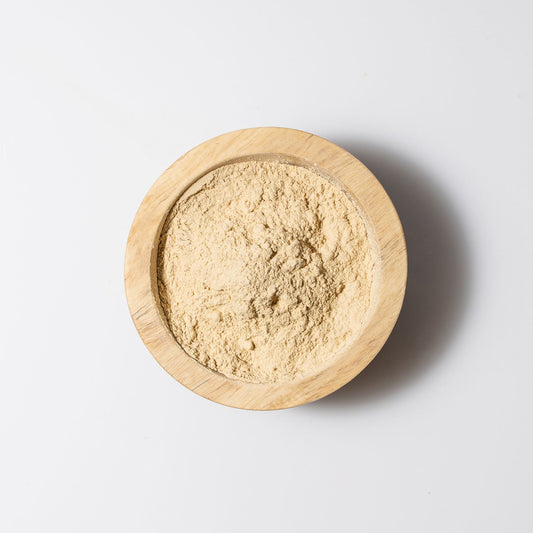From an
Responsible for more than physical reproduction alone, our reproductive health provides the creative energy to achieve our goals and enjoy the fullest and most juicy version of our lives.
When healthy, our reproductive potential may be used to make a baby, bring a dream into reality, or nourish the quality and longevity of life.
The Fertile Ground of Shukra and Artava Dhatu
In
Shukra means “radiant, bright, and pure” and relates to the essence of things.
Our reproductive vitalityis based on all of the bodily tissues feeding nutrients to the reproductive glands of our ovaries and testes, which in turn provides the
Artava means “reproductive flow” and
In modern research, it is a proven fact that male bodies also go through a cleansing process each month, which typically produces more bodily odor and activates heightened emotions.
Both the genitourinary system for male bodies and the reproductive system for female bodies have planetarily influenced cycles that create a slow hormonal build up in the beginning, a robust and fertile peak, and a time for cleansing and releasing the hormones that have not been utilized.
The Dance of Masculine and Feminine Energies
In Samkhya philosophy, the origin of Ayurvedic theory, all things are created from the two dualistic forces of our feminine (prakruti) and masculine (parusha) natures.
The energy of parusha is seen as formless, colorless, and innately passive in its nature, providing an “avenue” for what we desire to be held and contained. The energy of
Dreams, goals, and babies are all made from a masculine container and a feminine spark working together. Both are equally important and dependent on one another.
Each one of us has these feminine and masculine energies at play within us. They aid us in maintaining balance, looking at situations from both sides, and making healthy decisions.
As humans, we have the ability to create much more than a child with our personal choices, yet we must have the juice to do it.
This juicy vitality is the culmination of our breath, emotions, what we eat, how it metabolizes in the digestive tract, and how our tissues feed one another—from lymph to blood to muscles to skin to bones to nerves to reproduction.
Beyond the physical, getting to know our masculine and feminine natures also helps to cultivate reproductive vitality. We all have individualized ratios of these dualistic energies that make us unique and play out in our own lives and in our relationships.
To become more aware of these energies, ask yourself how well you hold space for your own desires and how naturally you take action and follow through to get where you want to go. In relationships, how well do you hold space for others? Do you have someone else who holds space for your weaknesses and encourages your strengths to shine?
A healthy balance of energies helps us to create what we desire by holding space for the vision and then taking the actions necessary to make it a reality.

The Power of our Creative Juices
We all know what it feels like to get our reproductive juices flowing, whether it manifests as individual creativity energy or literal reproductive juices from sensual arousal.
When our fertile vitality and passionate energies collide, we can create anything! And the process of achieving meaningful goals can be extremely juicy, rewarding, and satisfying.
Whether building a business, creating an artistic project, or collaborating with others towards a common goal, we all have the power to utilize our reproductive potential as we desire.
This is not a shameful discussion—it means you are inspired by something that brings you pleasure and that you are “feeling it,” whether in relation to personal achievement or who you are sharing intimate time with in your life.
Most importantly, it should feel good—we are designed to feel pleasure and to create what we desire.
The key is cultivating the juice to take action and finding satisfaction through dedication, commitment, and follow through. According to Ayurveda, these qualities are intimately connected to healthy reproductive tissues.
Nourishing Healthy Reproductive Tissues
So how do we know that the reproductive system is healthy and well? Here are a few telling signs:
-
Fluids: Should be creamy, unctuous, liquid, or silky and yogurt-like, depending on the time of month.
-
Hormones: Healthy hormones mean a balanced libido, a sense of vitality, the presence of cervical mucus at ovulation, and healthy ejaculation.
-
Odor: Reproductive fluids should smell sweet and slightly astringent, without any irregular odor.
When the reproductive tissues don't receive the healthy nourishment they need, they can become imbalanced in a number of ways. Here are a few ways to recognize the signs of imbalanced
Vata in Shukra and Artava Dhatu
Signs of Excess Vata:
Scanty fluid production, thinning of the skin and hair, cramps in the hips or pelvic floor, low libido, impotence, difficulty achieving orgasm, low estrogen, low testosterone.
Finding Balance:
Herbal Support: Take one teaspoon of ashwaganda powder in warm milk before bed
Oil Massage: Use Ashwaganda Oil+ for a pelvic floor massage
Essential Oils: Clary Sage, Vitex, Cypress
Pitta in Shukra and Artava Dhatu
Signs of Excess Pitta:
Odorous fluids, excess accumulation of heat near the nipples, testes, ovaries, and reproductive organs, irritated skin, overheated glands, using intimacy to release frustration, excessive sex drive, high testosterone, high progesterone.
Finding Balance:
Herbal Support: Take one teaspoon of shatavari powder in warm water before bed
Oil Massage: Use Brahmi Oil for a pelvic floor massage
Essential Oils: Blue Cypress, Frankincense, Rose Geranium
Kapha in Shukra and Artava Dhatu
Signs of Excess Kapha:
Thick or heavy fluids, breast or testicular swelling, imbalanced discharges, excess hair growth, lack of intimacy from self-worth issues, high estrogen, imbalanced cholesterol.
Finding Balance:
Herbal Support: Take one teaspoon of bilva powder in warm water before bed
Oil Massage: Use Bhringraj Oil for a pelvic floor massage
Essential Oils: Sweet Marjoram, Wild Carrot Seed, Tulsi










